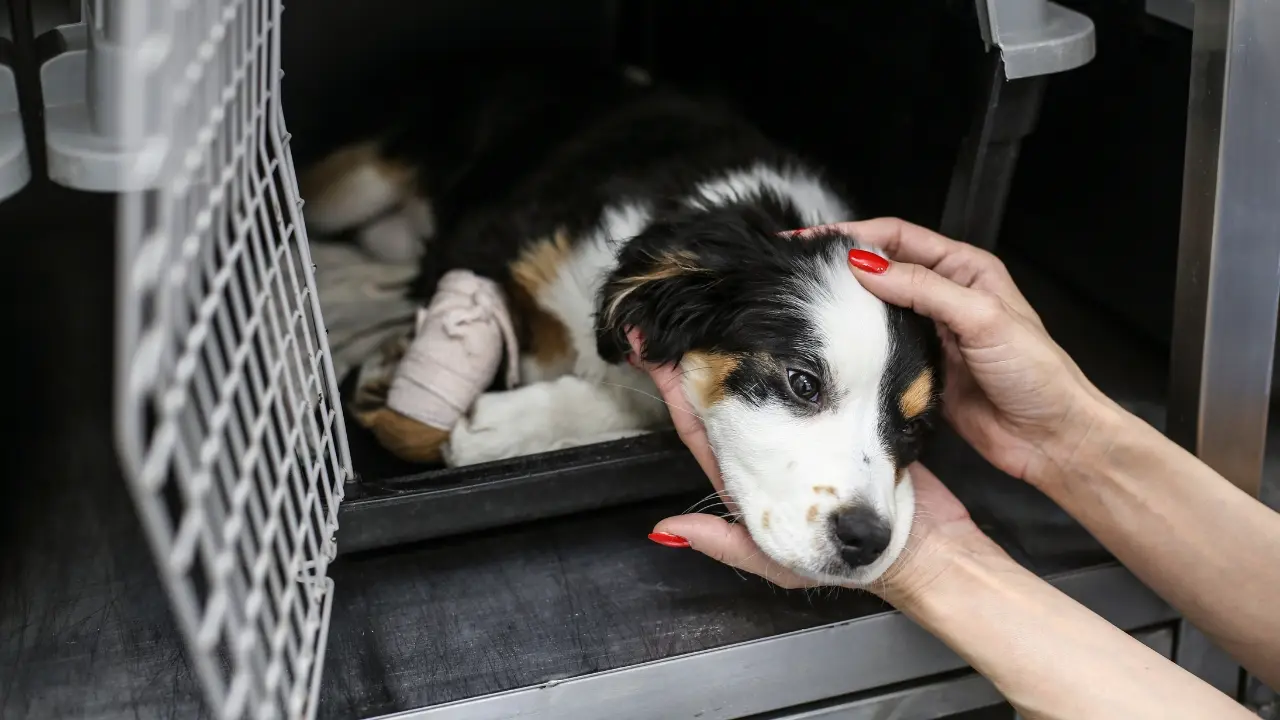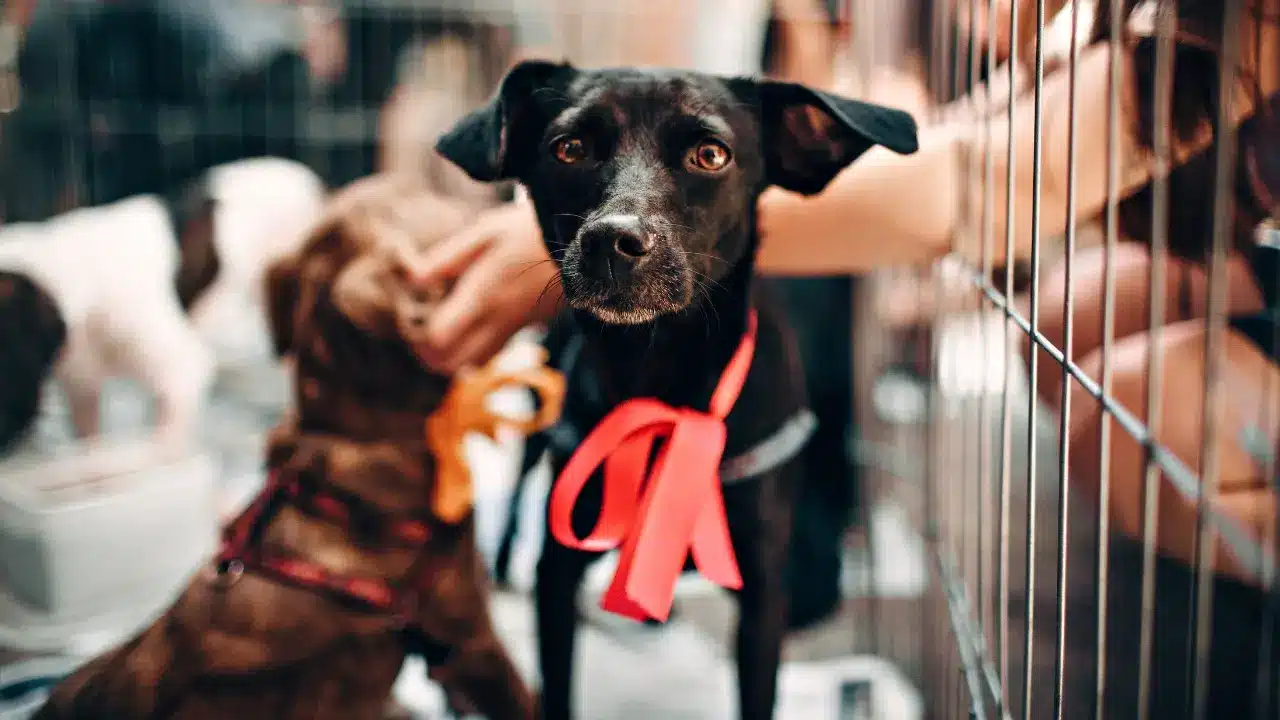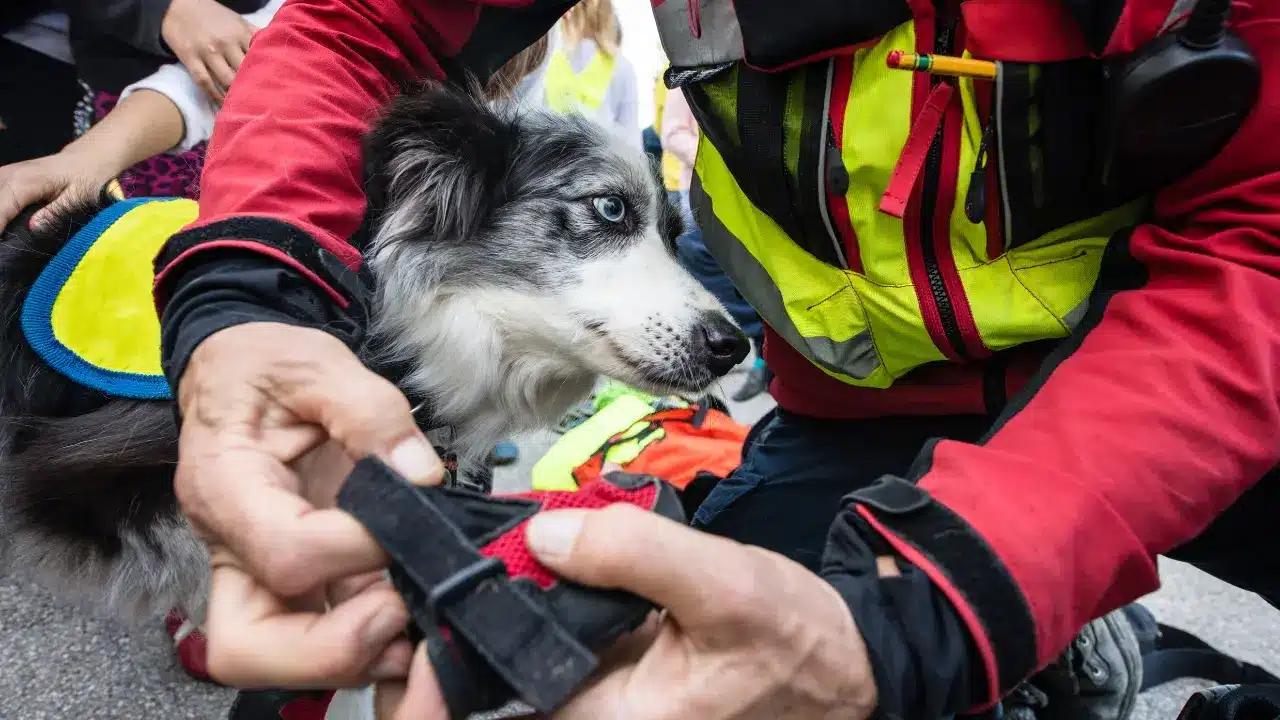Blog Training Rescue Dogs: Overcoming Trauma and Building Trust
Although adopting a rescue dog is rewarding, it has its challenges. Many rescue dogs have experienced trauma, uncertainty, or neglect, which can make them hesitant or fearful in new environments. They often require specialized training sessions to build trust, good behavior, and confidence.
Common Rescue Dog Behavioral Issues
Rescue dogs’ behaviors stem from a lack of socialization and past trauma. They develop logical behaviors based on how their lives work. Compassionate owners try to understand. It takes time for dogs to learn they are no longer in that life.
They may exhibit these behaviors:
- Fear of new situations or people
- Flinching when approached by someone holding an object
- Guarding resources such as a favorite place in the home, food, or toys
- Excessive barking and whining due to anxiety
- Growling
- Destructive behavior and chewing as a coping mechanism
- Relieving themselves in inappropriate areas
Growling, excessive barking, and cowering are defense mechanisms developed to cope with a previous environment. For others’ safety, avoid a dog park with a dog like that. Understanding the triggers allows one to approach training sessions with patience. Gradually introduce techniques to build a dog’s confidence.
It is essential to recognize what triggers a dog’s reaction due to fears and avoid situations that reinforce those fears. A dog afraid of unfamiliar people or loud noises should be desensitized to those triggers gently over time.
They may be malnourished or require a visit to the vet for conditions they developed. Health problems requiring immediate attention include diseases like heartworm, dental issues, or untreated injuries.
Senior dogs may need extra care for conditions related to age.
Improving nutrition is critical for health and bonding, as they learn you care and provide the good stuff like treats and dog bones.
Understanding these issues helps owners create a safe environment for their pets and build a lifetime bond. Training, whether professional training or at home, allows dogs to overcome hurdles and encourages good behavior.
Here are some tips for training a rescue dog and creating a supportive and positive reinforcement environment for its growth.
Establishing a Safe Space

It is crucial to provide a safe, quiet space for a dog entering a new home to relax and retreat. It should be free of overwhelming stimuli or loud noises. A specific room or cozy crate with water, toys, and a bed is an excellent setting. Little by little, the area becomes a comfortable refuge.
Crate training is among the first dog training sessions for a rescue dog. When presented correctly, a crate is like a den. It is a cozy, warm space where dogs feel secure. A rug in a corner is an alternative if a dog has a bad experience in a crate. Flexibility is essential.
Gradually Building Trust
Many rescue dogs are initially wary of new environments or people. Building trust takes time, and it is essential to avoid pushing them into unfamiliar situations too quickly. Allow the dog to come to you at its own pace.
To help the dog feel safe, offer calm communication, gentle petting, and treats. Use a consistent routine and exercise patience in interactions. Trust is a gradual process; it is not built overnight.
A shelter dog usually receives socialization before adoption, a hurdle that is overcome. However, the dog may still be skittish. Trust is built when you act predictably.
Dogs thrive on structure, so create a predictable routine.
Use Positive Reinforcement
A rescue dog responds well to positive reinforcement. Reward desired behavior with toys, praise, and treats to help dogs understand what is expected of them. Reinforcing good behavior and encouraging a dog’s confidence by showing them that they do the right thing reinforces good behavior.
It is essential never to use punishment for behavioral issues. Punishment destroys trust and is more likely to cause problems. A rescue dog may respond negatively to harsh discipline, reinforcing fears instead of overcoming trauma.
Providing comfort and rewarding small successes when a dog feels insecure creates a positive association with training. Positive reinforcement is a secret weapon in training methods.
Reward a dog when it does something constructive, such as not barking at a cat or sitting calmly when attached to a leash.
The rewarding experience should be more than a pat on the head or praise. It should be an edible treat small enough not to ruin dinner but irresistibly sufficient to make the connection between behaviors and rewards.

High-value dog treats like single-ingredient beef bites are healthy and protein-packed. They quickly get a dog’s attention and keep them motivated during training. Meaty marrow-filled bones are more substantial dog treats that help alleviate boredom and anxiety and make a dog more receptive to training.
Exposure and Socialization
Even though many rescue dogs experienced past trauma, it is essential to help your dog become comfortable with different environments, animals, and people, and socialize. Begin slowly with positive, calm interaction and gradually provide exposure to new environments.
Meeting only one or two people at once, puppy classes, and controlled walks help a dog gain confidence. Socialization is critical for ensuring a dog is comfortable in different situations and preventing future behavioral issues.
Reading the body language is crucial to ensuring a dog feels understood and safe. Observing the behaviors and body language gauges specific areas where the dog needs support.
Consistent Routine
A consistent routine greatly benefits a rescue dog. It provides a predictable routine and structure. Dogs thrive in environments where they know what is expected, especially those who have experienced trauma. Set a consistent schedule for play sessions, walking, and feeding.
Regular training sessions should involve positive, fun activities to ensure success in motivating and engaging the dog. As time passes, dogs begin to feel more confident in their environments and more secure in their role in a household.
Exhibit Patience in Addressing a Fearful Dog

If a rescue dog exhibits separation anxiety or fear by hiding, growling, or cowering, it is essential to approach the situation with empathy and patience. Fearful behavioral issues stem from past trauma. Punishing or scolding these reactions undermines trust.
Slowly try to desensitize the dog to their fears. Use positive reinforcement and treats to create a calm environment when encountering fearful situations. For dogs struggling with being left alone, manage separation anxiety by leaving the dog alone for short periods and increasing the time gradually.
Provide them with engaging activities like treat-filled toys to ease the fear. Set up a reliable routine for arrivals and departures that lets the dog know you will return—training techniques such as crate training help when done with positive reinforcement and care. Over time, these approaches help dogs overcome anxiety.
Professional Help
Some behavioral issues require expert attention. In cases of aggression or severe anxiety, consult a behaviorist or professional dog trainer specializing in rescue dogs. An experienced dog trainer provides personalized training strategies tailored to a dog’s needs and helps address challenges effectively.
Each rescue dog is unique. With the proper support, they flourish in a new home. Overlooked or misunderstood shelter dogs have unique quirks and personalities. Some bark excessively, and others need time to trust. With love and patience, the dogs thrive and form unbreakable bonds with their owners.
Training a Rescue Dog
A rescue dog has baggage, such as a lack of understanding of what life in a loving home feels like, anxiety, or fear. Training a rescue dog is more than teaching commands. It is about creating a safe space and building trust.
Focused training for five to ten minutes is better than an hour, which can be frustrating for you and your dog. End each session on a high note.
Training a dog to perform basic skills on command builds cooperation and trust.
Why Adopt a Rescue Dog?
Adopting a rescue dog is a rewarding experience that adds a companion to your life and gives animals in need a second chance. Providing a forever home offers them the stability and love they deserve. The benefits include:
- A second chance for animals in need
- There is a wide variety from which to choose
- Unconditional love
- Saving lives
Adopting a shelter dog allows one to thrive in a safe space and overcome past experiences. Shelters have dogs of all breeds, sizes, and ages. You can adopt a specific breed, a senior dog, or a new puppy to suit your lifestyle.
Many rescue dogs form a strong bond with their owners, offering unmatched loyalty and love. Adopting a dog helps the dog you are adopting and frees space for other animals in need.
Closing Out

Training these dogs requires compassion, consistency, and patience. Begin exposing a dog to new experiences, using positive reinforcement, building trust, and providing a safe space. You help a dog grow into a well-behaved, confident companion.
A rescue dog in Palm Beach may have challenges and limitless potential. With the right training tools, positive reinforcement, and patience, a rescue dog thrives and creates a lifelong bond. Shelter dogs suffering from past trauma thrive in a new home and overcome obstacles with a consistent routine, proper training, and love.
Whether it is behaviors, barking, or separation anxiety, every challenge overcome is a step closer to forming an unbreakable bond and building trust. Rescue dogs have repeatedly proven they can become happy, loyal companions if given a chance.
Focus on investing in tools that support their well-being, understanding body language, and creating a safe space to ensure successful training. With patience, a shelter dog becomes a family member and reminds us that every effort is worth the love given in return.
Contact Very Important Paws today in Palm Beach for all your dog boarding, hotel, daycare, grooming, and training needs.

